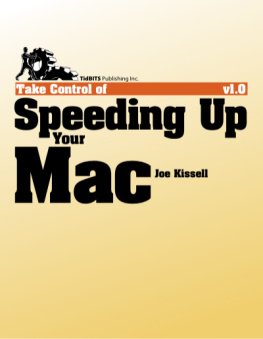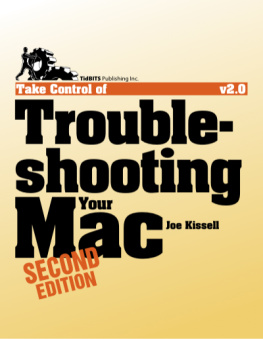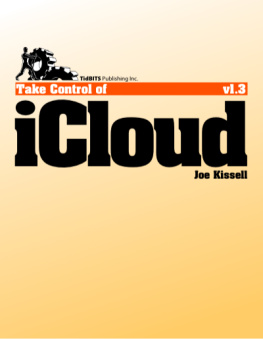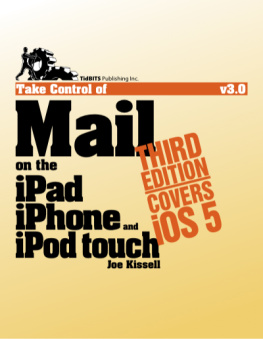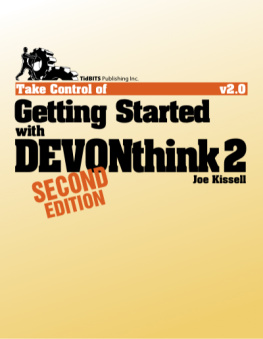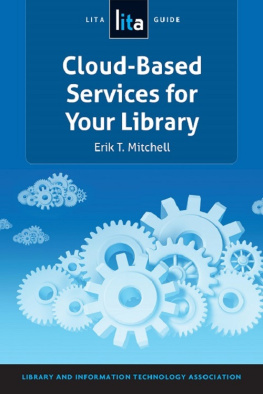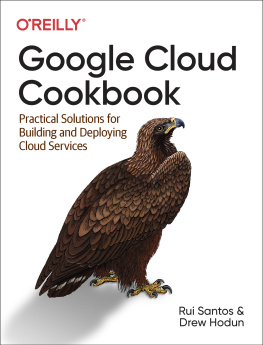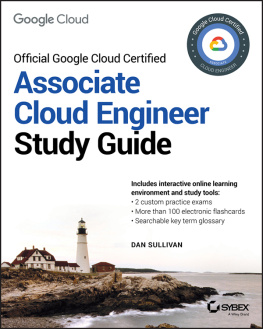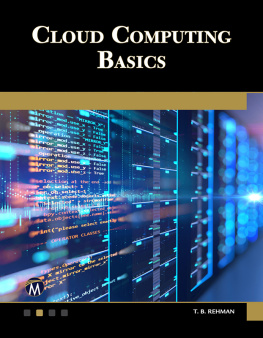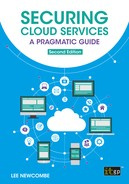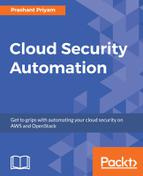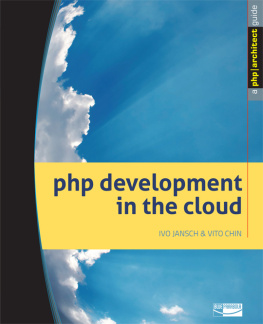This book helps you understand the Cloudwhat it is, what it can do for you, and what you need to know to make smart decisions when purchasing cloud products and services.
If you want to share this ebook with a friend, we ask that you do so as you would with a physical book: lend it for a quick look, but ask your friend to buy a copy for careful reading or reference. Also, you can Teach This Book.
Copyright 2014, alt concepts inc. All rights reserved.
You can access extras related to this ebook on the Web (use the link in Ebook Extras, near the end; its available only to purchasers). On the ebooks Take Control Extras page, you can:
If you bought this ebook from the Take Control Web site, it has been added to your account, where you can download it in other formats and access any future updates. However, if you bought this ebook elsewhere, you can add it to your account manually; see Ebook Extras.
For example, if you use iBooks to read the EPUB version of this ebook, you can click the Back to link at the lower left. Or, if you use Preview on the Mac to read the PDF version of this ebook, you can choose Go > Back or press Command-[.
Introduction
Its hard to think of a more overused technology marketing term than cloud. Vendors proudly tout everything from word processors to light bulbs as being cloud-enabled, cloud-friendly, cloud-this, cloud-that. Theres cloud computing, cloud storage, cloud sync, cloud services, cloud providers. iCloud, Creative Cloud, Cloud Drive, Cloud Mate. The list could go on for many pages.
Companies seem to believe that invoking the magic word cloud casts a spell over potential customers, as if everybody knows that anything having to do with the Cloud is modern, sexy, exciting, and well worth shelling out money for, regardless of its other attributes.
And yet, few companies bother explaining what they mean by cloud, howif at allits any different from online, and what it is about the Cloud that so obviously makes everyones life better.
Meanwhile, we consumers face a bewildering array of choices when it comes to products and services that make use of the Cloud. While youre trying to make up your mind about signing up for a service that, say, backs up your files online or lets you edit spreadsheets in a Web browser, a dozen more companies spring up that offer more or less the same thing, each one begging for your business.
And still, you may have a little voice in the back of your head saying, What is the Cloud, anyway? Is it a good thing? Is it even necessary? What real advantages does this nebulous concept bring me? Is it safe? Is it useful? Is it worth spending money on? What can I do with it? How do I make good choices about it?
Im tired of all the empty cloud hype, tired of watching people smile and nod nervously when they hear the word cloud as if theyre unsure what it means but are afraid to admit it because everyone else seems to know. Why, just a couple of years ago, a national survey of 1,000 adult Americans indicated that 51 percent of them believed stormy weather could interfere with cloud computing, 29 percent thought the Cloud was an actual cloud, and only 16 percent had a pretty good idea what it truly is.
Well, enough of that. I decided it was high time someone condensed this vaporous concept into an easy-to-read book. Im here to dispel the darkness, banish the mist, shine sunlight on the landscape, show you the silver lining, and work my way through as many other cloud metaphors and puns as necessary to explain whats going on. If youve ever wondered what the Cloud is all about, what you can do with it, or how it might affect your future, this book will help you make sense of it. Instead of being subject to arbitrary marketing whims, youll be able to take control of the Cloud.
Unlike most Take Control books, this one is not primarily how-to in nature. It would be pointless for me to attempt exact, step-by-step instructions for activities related to the Cloud because there are so manyand services, features, and prices change almost daily. Likewise, I cant make many firm recommendations of specific cloud services or providers (although I do make a few), because the facts are so fluid. But I do my best to offer a thorough and clear explanation that will help you make good decisions even as the technology changes.
I wrote this book for ordinary folkpeople who might want to sign up for services or buy products for their personal use, for a home office, or for a small business. I dont address the sorts of questions that enterprise users or developers might have, and I approach the subject mainly from the consumers point of view, as opposed to the providers. And finally, what I discuss here is entirely platform-neutral: whether you use a Mac or PC; an iOS, Android, or Windows mobile device; an Apple TV or an Xbox One, youll find plenty of useful information in this book.
Cloud Concepts: The FAQ
You probably have a number of questions about the Cloud, so lets address some of the most common ones right here at the beginning. This first chapter is an FAQ that lays out the major facts and points you to parts of the book where I go into more detail.
FAQ Topics
What Is the Cloud?
First things first. This being a book about the Cloud, we should start by clarifying what that term means. And thats trickier than it sounds: theres no single, universally agreed-upon definition.
For many people, the Cloud is synonymous with the Internet. Its a global network of smaller, interconnected networks, that if viewed diagrammatically at a large enough scale, might vaguely resemble an actual cloud. In this sense, the word cloud is intended as a clever if overused metaphor, but doesnt add any shades of meaning.
Increasingly, however, the Cloud is used in a more specific sense to refer to storage, applications, and other services made available over the Internetsometimes for free, but often for a small feeto people and businesses as a replacement for similar products that would otherwise run on local devices. (Think: Google Docs versus a copy of Microsoft Word installed on your computer.) Such services are provided by large, distributed computer networks rather than individual servers, adding another stratum to the cloud metaphor. Given this usage of the term, a conventional FTP server would just be on the Internet whereas Dropbox is in the Cloud. (If that doesnt make sense yet, dont worrymore details are coming soon.)


